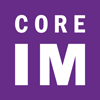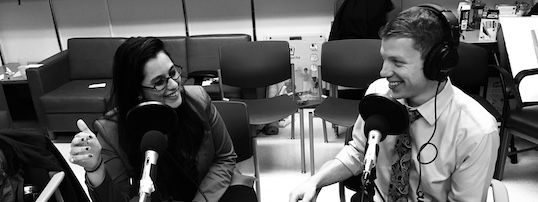Core IM
Pacemakers and implantable cardioverter defibrillators (ICDs) are lifesaving implantable cardiac devices, which are utilized to manage abnormal electrical rhythms and certain forms of heart failure; however, many clinicians struggle to identify the main indications for pacemakers or ICDs. Furthermore, healthcare professionals often encounter clinical scenarios that require a basic understanding of these devices, such as bloodstream infections, device interrogations, or end-of-life decision making considerations in patients with pacemakers or ICDs.
In this episode, the Core IM team addresses these knowledge gaps and equip clinicians with tangible practice-changing knowledge bytes to apply to patients with these implantable cardiac devices. You’re invited to join Drs. Dunn, Trivedi, Locke, Tamirisa and Cooper for Pacemakers and ICDs: 5 Pearls Segment.
First, listen to the podcast. After listening, ACP members can take the CME/MOC quiz for free.
CME/MOC:
Up to 0.75
AMA PRA Category 1 Credits ™ and MOC Points
Expires April 12, 2026
active
Cost:
Free to Members
Format:
Podcasts and Audio Content
Product:
Core IM
Welcome to Core IM, a virtual medical community! Core IM strives to empower its colleagues of all levels and backgrounds with clinically applicable information as well as inspire curiosity and critical thinking. Core IM promotes its mission through podcasts and other multimodal dialogues. ACP has teamed up with Core IM to offer continuing medical education, available exclusively to ACP members by completing the CME/MOC quiz.

What are pacemakers?
- Devices implanted in the body to treat bradyarrhythmia, AV conduction disease, or severe systolic heart failure.
- Common class I indications (see guidelines for additional indications)
- Sinus node dysfunction
- Symptomatic bradycardia
- Symptomatic chronotropic incompetence
- Tachy-brady syndrome
- AV conduction disease
- Any 3rd degree AV block (with or without symptoms)
- Any Mobitz type II AV block with QRS > 120 ms (with or without symptoms)
- Symptomatic 2nd degree AV block (Mobitz type I or II)
- Severe systolic heart failure
- LVEF < 35%, left bundle branch block, and NYHA class II or greater symptoms, despite optimal guideline-directed medical therapy for 90 days
- Sinus node dysfunction
- Types of traditional pacemaker systems:
- Single lead (rare):
- Usually in the right ventricle (RV)
- Dual chamber:
- RA and right ventricle (RV)
- Cardiac resynchronization therapy (CRT), also known as biventricular pacing:
- RA, RV, and coronary sinus
- Single lead (rare):
- Function of pacemaker depends on number and location of leads:
- For example, a dual chamber (i.e., RA and RV) pacemaker can sense electrical activity in the RA and RV.
- When it notices AV block, or a lack of signal conduction between the chambers, it can deliver an electrical stimulus to the RV to bypass the blocked pathway.
- It also kicks in when it senses the heart rate is lower than what it is programmed to sense (sinus node dysfunction).
- Since cardiac resynchronization therapy (CRT) or biventricular pacing have leads RA, RV, and coronary sinus, CRT can help both ventricles contract at the same time. This is indicated in patients with low ejection fraction <35% and LBBB.
- For example, a dual chamber (i.e., RA and RV) pacemaker can sense electrical activity in the RA and RV.
What are ICDs?
- ICDs are devices implanted in the body to treat life-threatening tachyarrhythmias, including ventricular tachycardia (VT) and ventricular fibrillation (VF).
- Traditional ICDs also have all the functionality of pacemakers.
- What are common class I indications? (see guidelines for additional indications)
- Primary prevention
- Ischemic cardiomyopathy – EF ≤ 30% and prior myocardial infarction
- Any cardiomyopathy – EF ≤ 35% despite optimal guideline-directed medical therapy for 90 days
- Other conditions placing patients at high risk for life-threatening tachyarrhythmias, such as symptomatic congenital long QT syndrome
- Secondary prevention
- Prior VF or unstable VT without recent myocardial infarction
- Prior sustained VT with significant cardiomyopathy
- Primary prevention
- How do ICDs treat tachyarrhythmias?
- Anti-tachycardia pacing
- ICD detects life-threatening tachyarrhythmia and delivers small electric currents with the goal of interrupting a dysfunctional electrical pathway.
- Can avoid giving a shock!
- Defibrillating shock
- Anti-tachycardia pacing
How to determine which type of device your patient has?
- Ask the patient!
- Patient may know or have a device identification card.
- Review the patient’s medical record for documentation of a device.
- Check the chest xray.
- Identify the number and location of the leads.
- How do you distinguish ICD from pacemaker?
- Look for thickening at the end of a lead, which indicates it is an ICD).
- “There’s an app for that!”
- Consider using a smartphone application, such as Pacemaker ID or Cardiac Rhythm Management Device-Finder, to identify the device manufacturer.
- Specifying the device type and manufacturer is helpful when placing a cardiology consult, as the equipment used to interrogate pacing devices varies by manufacturer.
What is a device interrogation?
- Determines whether or not the device is functioning properly
- Lead function
- Battery life
- Programming (e.g., mode)
- Event log
- Can help clinicians correlate the patient’s symptoms to cardiac events
- Of note, only records what it is programmed to record – may not include clinically significant events depending on programming
How to manage patients with a pacemaker or ICD who develop a bloodstream infection?
- Devices may need to be removed
- However, device removal is often high risk and requires careful consideration.
- Involve infectious disease and electrophysiology (or cardiology) teams EARLY for any patient with a bloodstream infection and cardiac pacing device.
- Device is typically removed for persistent infections or transient infections WITH highly virulent organisms (e.g., Staphylococcus aureus or fungi), as the device is considered seeded in these scenarios.
How to approach end-of-life considerations in patients with pacemakers or ICDs?
- Pacemakers do not need to be turned off.
- ICDs may be appropriate to turn off if a patient is actively dying and declines resuscitation, as the shocks can be uncomfortable to the patient and difficult for the family to see.
Contributors
Shreya Trivedi, MD, ACP Member – Author/ Host
Aaron Dunn, MD – Author / Host
Andrew Locke, MD – Guest Expert
Kamala Tamirisa, MD – Guest Expert*
Joshua Cooper, MD – Guest Expert
Reviewers
Patricia Tung, MD
Samia Karim, DO
* Kamala Tamirisa, MD
Consultant, Speaker: Sanofi
Those named above, unless otherwise indicated, have no relevant financial relationships to disclose with ineligible companies whose primary business is producing, marketing, selling, re-selling, or distributing healthcare products used by or on patients. All relevant relationships have been mitigated.
Release Date: April 12, 2023
Expiration Date: April 11, 2026
CME Credit
This activity has been planned and implemented in accordance with the accreditation requirements and policies of the Accreditation Council for Continuing Medical Education (ACCME) through the joint providership of the American College of Physicians and Core IM. The American College of Physicians is accredited by the ACCME to provide continuing medical education for physicians.
The American College of Physicians designates this enduring material (podcast) for .75 AMA PRA Category 1 Credit™. Physicians should claim only the credit commensurate with the extent of their participation in the activity.
ABIM Maintenance of Certification (MOC) Points
Successful completion of this CME activity, which includes participation in the evaluation component, enables the participant to earn up to .75 medical knowledge MOC Point in the American Board of Internal Medicine’s (ABIM) Maintenance of Certification (MOC) program. Participants will earn MOC points equivalent to the amount of CME credits claimed for the activity. It is the CME activity provider’s responsibility to submit participant completion information to ACCME for the purpose of granting ABIM MOC credit.
How to Claim CME Credit and MOC Points
After listening to the podcast, complete a brief multiple-choice question quiz. To claim CME credit and MOC points you must achieve a minimum passing score of 66%. You may take the quiz multiple times to achieve a passing score.


